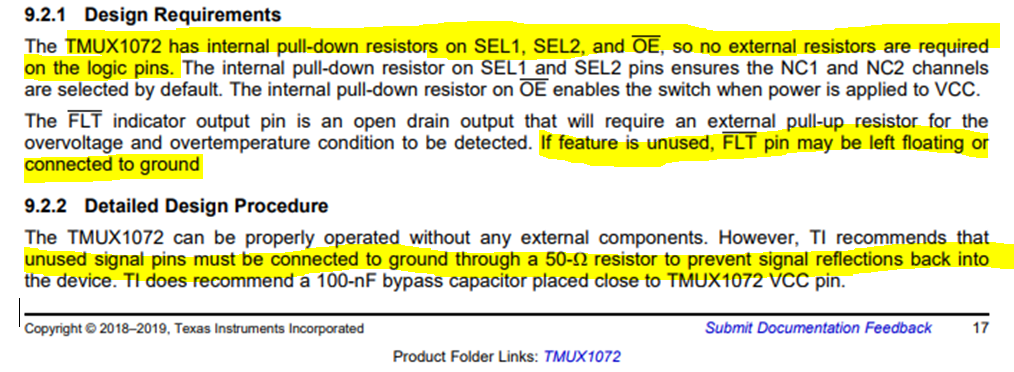Hi,
Could you please let me know the treatment for the pins which would not use?
My customer is interesting in TMUX1072 but he will use 1-ch. This mean is SEL2, NC2, NO2 and COM2 are not used.
For NC2, NO2 and COM2, Should user set them open or pull-down with 50ohm or connect to GND?
For COM2, Should use leave open or short to GND?
Could you please give me advice?
Regards,
Nagata.



